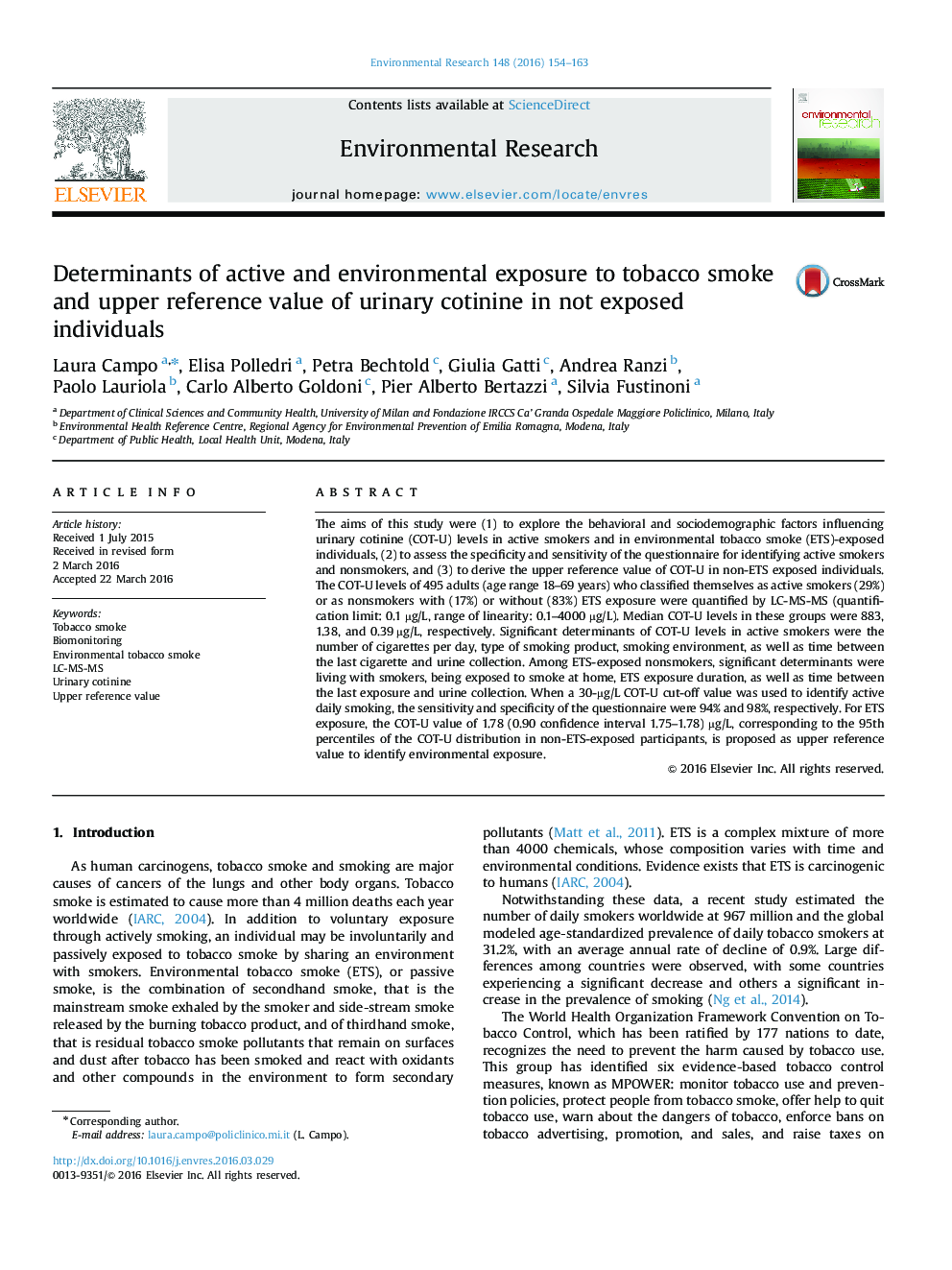| Article ID | Journal | Published Year | Pages | File Type |
|---|---|---|---|---|
| 6351496 | Environmental Research | 2016 | 10 Pages |
Abstract
The aims of this study were (1) to explore the behavioral and sociodemographic factors influencing urinary cotinine (COT-U) levels in active smokers and in environmental tobacco smoke (ETS)-exposed individuals, (2) to assess the specificity and sensitivity of the questionnaire for identifying active smokers and nonsmokers, and (3) to derive the upper reference value of COT-U in non-ETS exposed individuals. The COT-U levels of 495 adults (age range 18-69 years) who classified themselves as active smokers (29%) or as nonsmokers with (17%) or without (83%) ETS exposure were quantified by LC-MS-MS (quantification limit: 0.1 µg/L, range of linearity: 0.1-4000 µg/L). Median COT-U levels in these groups were 883, 1.38, and 0.39 µg/L, respectively. Significant determinants of COT-U levels in active smokers were the number of cigarettes per day, type of smoking product, smoking environment, as well as time between the last cigarette and urine collection. Among ETS-exposed nonsmokers, significant determinants were living with smokers, being exposed to smoke at home, ETS exposure duration, as well as time between the last exposure and urine collection. When a 30-µg/L COT-U cut-off value was used to identify active daily smoking, the sensitivity and specificity of the questionnaire were 94% and 98%, respectively. For ETS exposure, the COT-U value of 1.78 (0.90 confidence interval 1.75-1.78) µg/L, corresponding to the 95th percentiles of the COT-U distribution in non-ETS-exposed participants, is proposed as upper reference value to identify environmental exposure.
Related Topics
Life Sciences
Environmental Science
Health, Toxicology and Mutagenesis
Authors
Laura Campo, Elisa Polledri, Petra Bechtold, Giulia Gatti, Andrea Ranzi, Paolo Lauriola, Carlo Alberto Goldoni, Pier Alberto Bertazzi, Silvia Fustinoni,
